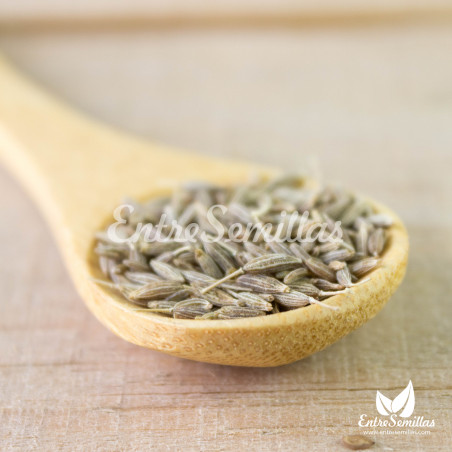




Cumin is an herbaceous plant native to the Mediterranean basin, whose seeds are used as a spice. Its intense and slightly spicy flavor makes it an essential ingredient in many cuisines around the world.
Cumin (Cuminum cyminum) is an annual herbaceous plant belonging to the Apiaceae family, native to the Mediterranean basin and Southwestern Asia. Its cultivation dates back over 3,000 years, with references in ancient civilizations such as the Egyptian, Greek, and Roman, who already used its seeds both in cooking and medicinal remedies. During the Middle Ages, cumin was introduced to the Iberian Peninsula, where it quickly became part of the local cuisine.
The plant has an erect stem that grows between 30 and 50 cm tall, with finely divided leaves and small white or pink flowers arranged in umbels. The most valued part of the plant is its seeds, which are elongated, light brown, and curved in shape. These seeds contain essential oils that give them their characteristic, intense, and slightly spicy aroma, making them a highly appreciated spice.
In Spanish cuisine, cumin is a key ingredient, especially in traditional Andalusian and Canary Island dishes. It is used in stews, rice dishes, soups, and spice mixes that enhance the flavor of various Mediterranean recipes.
In addition to its culinary use, cumin has historically been used in folk medicine for its digestive and carminative properties. It is believed to aid digestion, relieve colic, and have antioxidant effects.
Today, cumin continues to be a highly valued spice in both Spanish and other world cuisines, and its cultivation continues in various regions, both in hot and temperate climates. It is easy to grow in gardens and is ideal for those looking for fresh, high-quality spices for their preparations.

| January | February | March | April | May | June | July | August | September | October | November | December |
Data sheet
No customer questions for the moment.